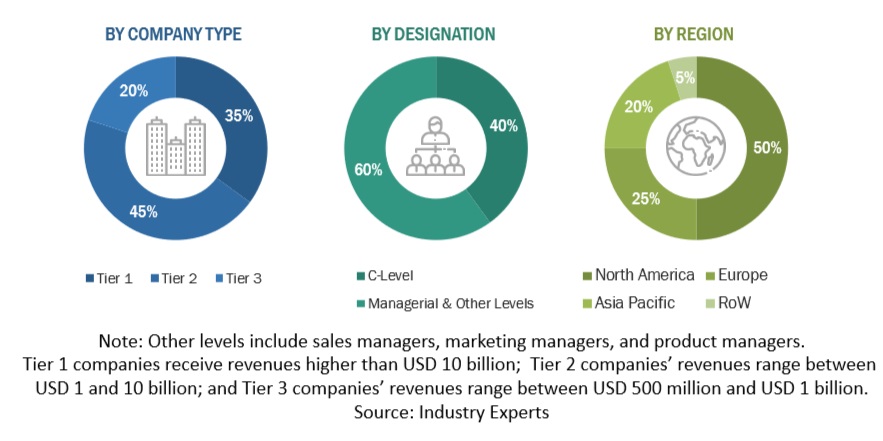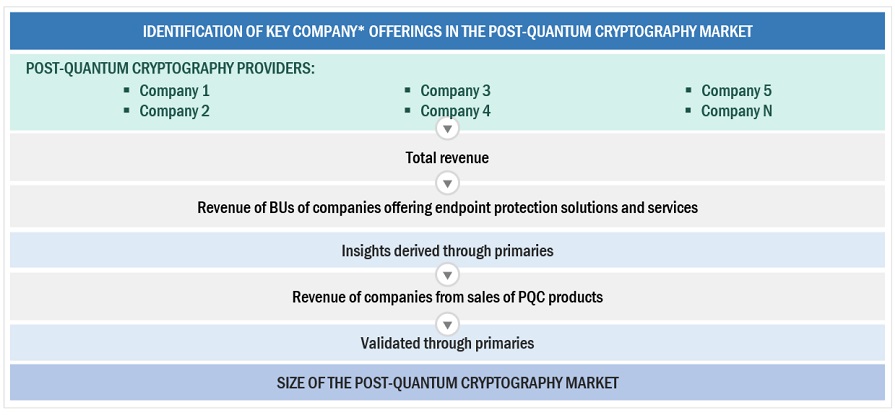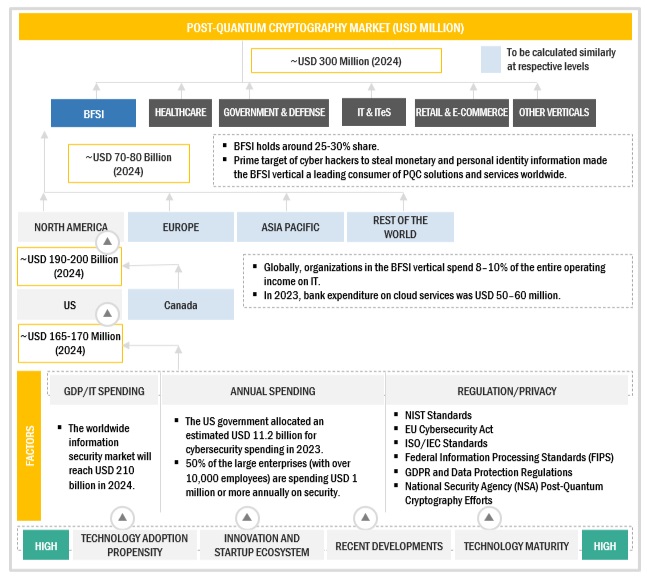This research study used extensive secondary sources, directories, and databases, such as NIST frameworks, Quantum computing libraries, D&B Hoovers and Bloomberg BusinessWeek, to identify and collect information useful for this technical, market-oriented, and commercial study of the global post-quantum cryptography market. The primary sources were mainly several industry experts from the core and related industries and preferred suppliers, manufacturers, distributors, service providers, technology developers, alliances, and organizations related to this industry's value chain segments.
In-depth interviews were conducted with primary respondents, including key industry participants, subject matter experts, C-level executives of key market players, and industry consultants, to obtain and verify critical qualitative and quantitative information and assess prospects.
Secondary Research
In the secondary research process, various secondary sources were referred to identify and collect information related to the study. Secondary sources included CSRC NIST, Quantum computing foundations, annual reports, press releases, investor presentations of PQC vendors, forums, certified publications, and whitepapers. The secondary research was used to obtain critical information on the industry's value chain, the total pool of key players, market classification, and segmentation from the post-quantum cryptography market and technology-oriented perspectives.
Primary Research
In the primary research process, various primary sources from the supply and demand sides of the post-quantum cryptography market were interviewed to obtain qualitative and quantitative information for the study. The primary sources from the supply side included industry experts, such as Chief Executive Officers (CEOs), Vice Presidents (VPs), marketing directors, technology and innovation directors, and related key executives of various vendors providing PQC solutions and services, associated service providers, and system integrators operating in the targeted regions. All possible parameters that affect the post-quantum cryptography market covered in this research study have been accounted for, viewed in extensive detail, verified through primary research, and analyzed to obtain the final quantitative and qualitative data.
After the complete market engineering process (including calculations for market statistics, market breakups, market size estimations, market forecasting, and data triangulation), extensive primary research was conducted to gather information and verify and validate the critical numbers arrived at. The primary research helped identify and validate the segmentation types, industry trends, key players, a competitive landscape of PQC solutions and services offered by several market vendors, and fundamental market dynamics, such as drivers, restraints, opportunities, challenges, industry trends, and key strategies.
In the complete market engineering process, the bottom-up and top-down approaches and several data triangulation methods were extensively used to estimate and forecast the overall post-quantum cryptography market segments and subsegments listed in this report. An extensive qualitative and quantitative analysis was performed on the complete market engineering process to list the key information/insights throughout the report.
Following is the breakup of the primary study:

To know about the assumptions considered for the study, download the pdf brochure
Post-Quantum Cryptography Market Size Estimation
Top-down and bottom-up approaches were used to estimate and validate the size of the Post-Quantum Cryptography market and the size of various other dependent sub-segments in the overall Post-Quantum Cryptography market. The research methodology used to estimate the market size includes the following details: critical players in the market were identified through secondary research, and their market shares in the respective regions were determined through primary and secondary research. This entire procedure included the study of the annual and financial reports of the top market players, and extensive interviews were conducted for key insights from the industry leaders, such as CEOs, VPs, directors, and marketing executives.
All percentage splits and breakdowns were determined using secondary sources and verified through primary sources. All possible parameters that affect the post-quantum cryptography market covered in this research study have been accounted for, viewed in extensive detail, verified through primary research, and analyzed to get the final quantitative and qualitative data. This data is consolidated and added to detailed inputs and analysis from MarketsandMarkets
INFOGRAPHIC DEPICTING BOTTOM-UP AND TOP-DOWN APPROACHES

To know about the assumptions considered for the study, Request for Free Sample Report

Data Triangulation
After arriving at the overall market size using the market size estimation processes explained above, the post-quantum cryptography market was split into several segments and subsegments. The data triangulation and market breakup procedures were employed, wherever applicable, to complete the overall market engineering process and arrive at the exact statistics of each market segment and subsegment. The data was triangulated by studying various factors and trends from both the demand and supply sides.
Market Definition
The Post-Quantum Cryptography market refers to the sector focused on developing, standardizing, and deploying cryptographic algorithms and security protocols designed to be secure against the potential threats of quantum computers. Quantum computers, once fully realized, are expected to be capable of breaking many of the cryptographic systems currently in use, such as RSA and ECC (Elliptic Curve Cryptography).
Key Stakeholders
-
Quantum Computing Architects
-
Encryption Providers
-
Crypto Agility Alliances
-
Quantum Researchers
-
Providers of PQC Solutions and Services
-
Consulting Firms
-
Third-party Vendors
-
Investors and Venture Capitalists
-
Technology Providers
Report Objectives
-
To describe and forecast the global Post-Quantum Cryptography market based on solution, service, organization size, vertical, and region
-
To provide detailed information about the major factors (drivers, opportunities, restraints, and challenges) influencing the growth of the post-quantum cryptography market
-
To analyze the opportunities for stakeholders by identifying the high-growth segments of the post-quantum cryptography market
-
To forecast the size of the market segments with respect to three regions: North America, Europe, Asia Pacific and Rest of the World
-
To analyze subsegments of the market with respect to individual growth trends, prospects, and contributions to the overall post-quantum cryptography market
-
To profile the key players and comprehensively analyze their post-quantum cryptography market sizes and core competencies
-
To track and analyze competitive developments such as product enhancements and new product launches; acquisitions, and partnerships and collaborations in the post-quantum cryptography market globally
Customization Options
With the given post-quantum cryptography market data, MarketsandMarkets offers customizations based on company-specific needs. The following customization options are available for the report:
Geographic Analysis
-
Further breakup of the Asia Pacific market into countries contributing to rest of to the regional market size
-
Further breakup of the North American market into countries contributing to rest of to the regional market size
-
Further breakup of the European market into countries contributing to rest of to the regional market size
Company Information
-
Detailed analysis and profiling of additional market players (up to 5)



Growth opportunities and latent adjacency in Post-Quantum Cryptography (PQC) Market